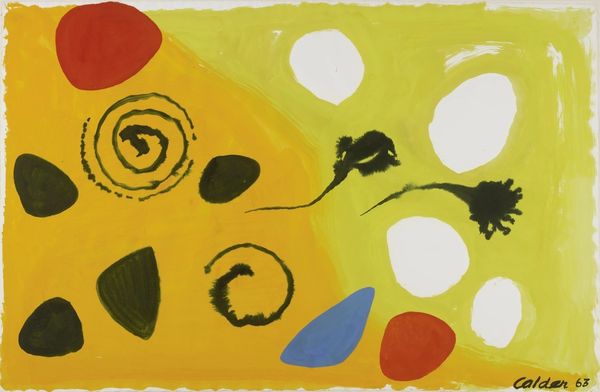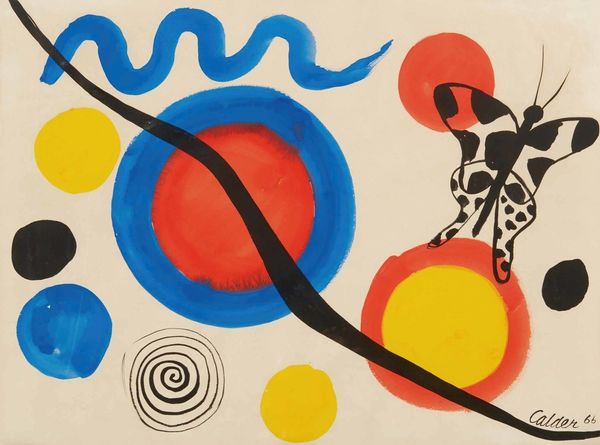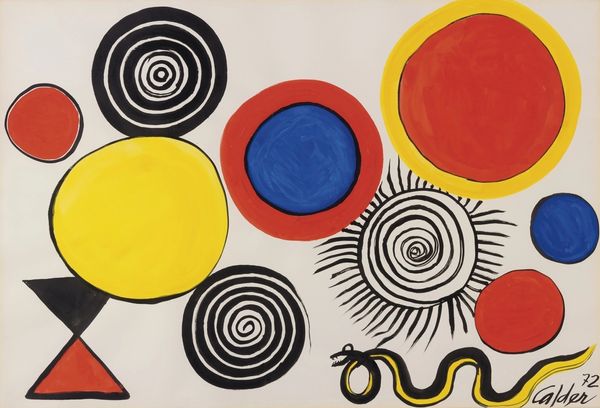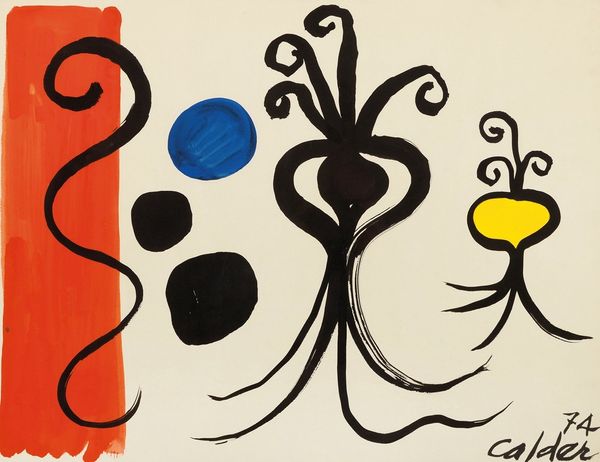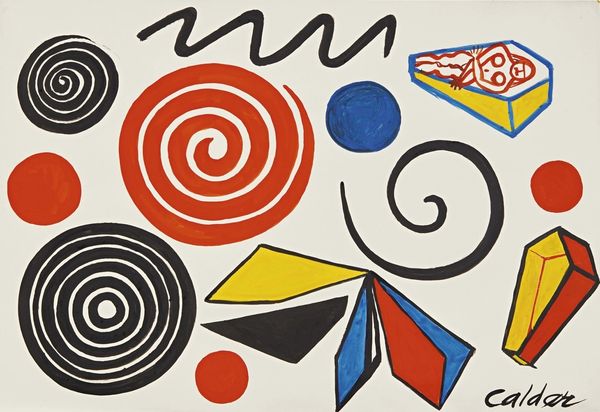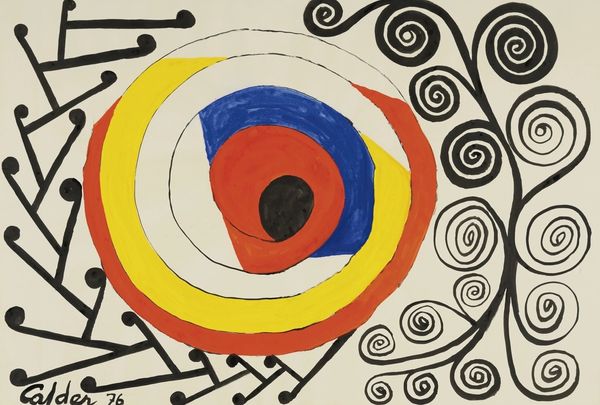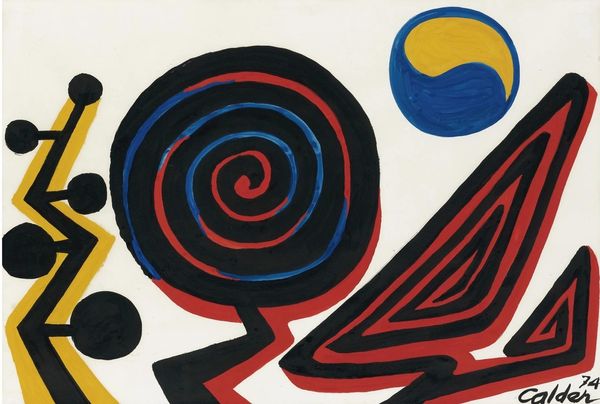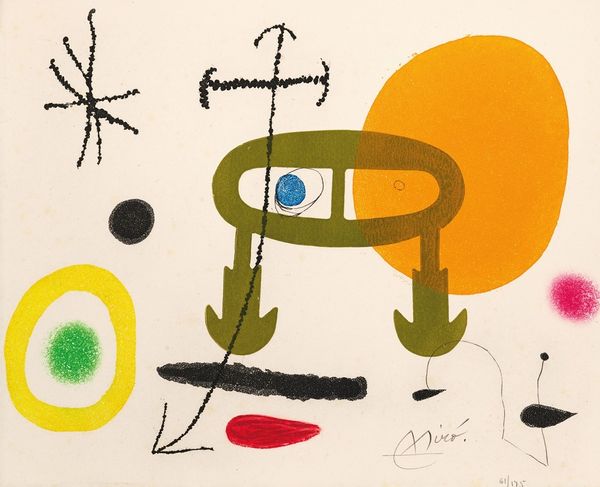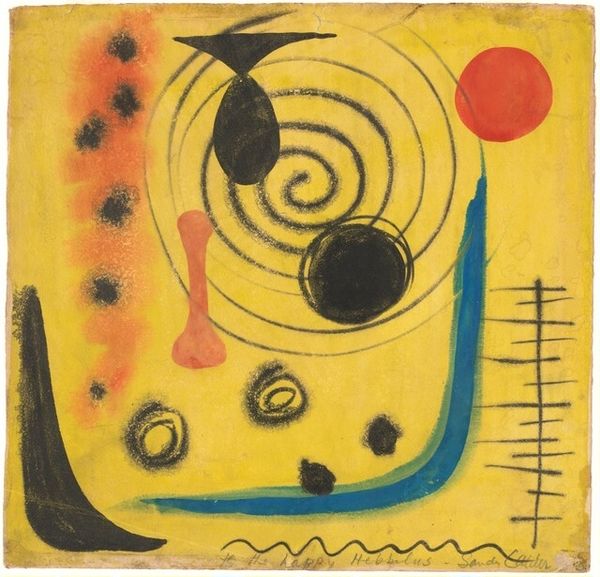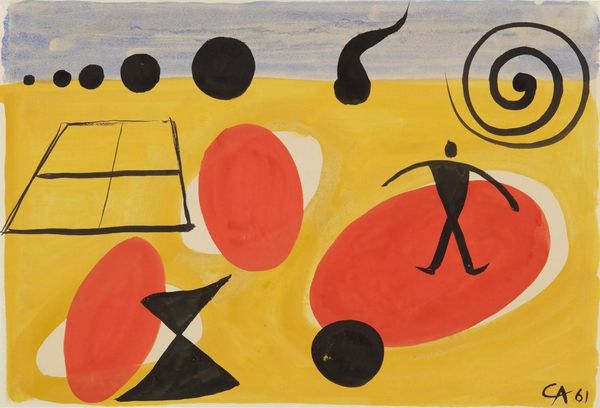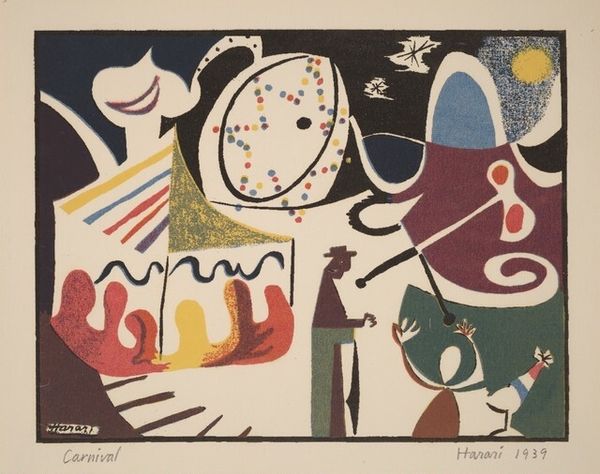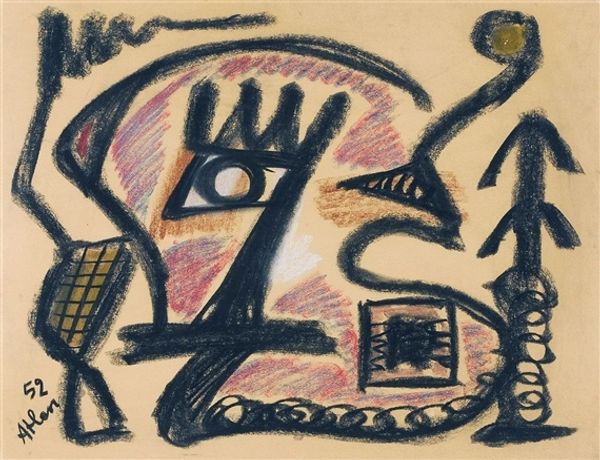
textile
#
abstract-expressionism
#
textile
#
form
#
linocut print
#
geometric
#
abstraction
#
line
#
modernism
Copyright: Alexander Calder,Fair Use
Curator: Alexander Calder’s textile work, "CERCLE JAUNE," created in 1953, presents a playful exploration of geometric forms against a neutral backdrop. What's your immediate take? Editor: There's an almost childlike whimsy here, despite the clear intentionality of its abstraction. I sense primal forms, like the sun and spirals—universal motifs that speak to something deeply ingrained in the collective human psyche. Curator: The 'childlike' aspect might stem from Calder’s rejection of rigid artistic hierarchies. He sought a democratic form of art, free from stuffy conventions, that resonates with ordinary lived experiences, even appearing 'naive'. Considering his era, post-war, the desire for unpretentious, accessible art could have radical political undertones. Editor: Absolutely. That yellow circle commands attention—it radiates life-giving energy, a sun perhaps. Then there are the coils, recurring in various forms, like echoes, maybe recalling ancient symbols for cyclical time and evolution, present across many cultures. The human fascination with the vortex, the spiraling galaxy, they’re all present here. Curator: Indeed. The use of geometric shapes can be seen as a move to redefine art for a modernist world, a clean break from classical representation. Calder’s exploration wasn’t purely aesthetic. He pushed boundaries, particularly as textile arts were historically seen as ‘feminine’ or ‘domestic,’ pushing back against those limiting frameworks by claiming textile as his medium. Editor: And look how he contrasts the solid yellow against outlined geometric shapes. That intentional interplay carries a deliberate energy. Circles often denote unity, wholeness, even the divine. Perhaps Calder is commenting on the relationship of order and chaos using abstraction rather than a specific narrative. Curator: That speaks to the interplay between representation and identity. How do simple geometric forms carry meanings in cultural memory but also open themselves to personal experiences. Calder allows this freedom to question who or what "CERCLE JAUNE" really depicts. Editor: It's intriguing to consider what this would have symbolized at the time, a moment of reevaluation on societal patterns and ways of being. What's most captivating is the visual harmony. Each element feels crucial, fostering a sense of equilibrium, much like looking up at the stars. Curator: For me, it emphasizes how much these modernist aesthetics are informed by a critical awareness, which still continues to spark ongoing dialogues today. Editor: A cosmic design that remains thought-provoking—both immediate and eternally complex.
Comments
No comments
Be the first to comment and join the conversation on the ultimate creative platform.
